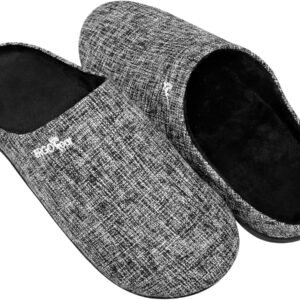The question of whether or not to tip furniture delivery personnel often leaves homeowners feeling unsure. It’s a grey area, unlike tipping a waiter or a taxi driver, where the custom is firmly established. As website giaithichtengoi.com might put it, “navigating the complexities of tipping customs can be a minefield.” This article aims to illuminate the etiquette surrounding tipping furniture delivery workers, offering guidance based on various factors, including service quality, distance, difficulty of delivery, and personal beliefs.
Understanding the Expectations
Unlike restaurant servers who rely heavily on tips for their income, furniture delivery drivers often receive a base salary and benefits. However, this doesn’t negate the value of a tip; it merely shifts the context. A tip is less about supplementing their income and more about acknowledging and rewarding excellent service. Think of it as a gesture of appreciation for going above and beyond.
- Base Salary vs. Tips: While many delivery workers receive a wage, tips remain a significant part of their overall compensation in many other service industries. Understanding this distinction helps clarify the purpose of a tip in this context.
- Company Policy: Some furniture companies explicitly prohibit their employees from accepting tips, while others remain silent on the issue. Checking the company’s policy beforehand might be prudent, though this doesn’t necessarily negate the possibility of offering a small gesture of appreciation for exceptional service.
- Cultural Norms: Tipping customs vary widely across cultures. In some societies, tipping is standard practice for nearly all services; in others, it’s less common or even considered inappropriate. Consider your own cultural background and the cultural background of the delivery personnel when deciding whether and how much to tip.
Factors Influencing the Decision to Tip
Several factors should inform your decision regarding tipping furniture delivery people. These include the quality of service received, the difficulty of the delivery, the distance traveled, and the overall weight and size of the furniture.
- Service Quality: Did the delivery team arrive on time? Were they courteous and professional? Did they handle your furniture with care, ensuring no damage occurred during the delivery process? Excellent service warrants a more generous tip.
- Delivery Difficulty: Were there any significant obstacles during the delivery, such as narrow hallways, stairs, or difficult terrain? A challenging delivery requiring extra effort deserves recognition through a higher tip.
- Distance Traveled: A long-distance delivery involves greater time and fuel costs for the delivery team. If the delivery involves a significant journey, a more substantial tip might be appropriate.
- Size and Weight of Furniture: The sheer size and weight of the furniture being delivered significantly impact the effort required. Delivering a large, heavy item like a sectional sofa requires significantly more physical exertion than delivering a small end table.
- Assembly: If the delivery team also assembled the furniture, this adds considerable value to their service and justifies a larger tip.
Determining the Appropriate Tip Amount
There’s no universally accepted standard for tipping furniture delivery people. The appropriate amount often depends on the factors mentioned above. However, some guidelines can provide helpful benchmarks.
- For Standard Delivery (easy access, no assembly): A range of $10-$20 is generally considered appropriate for a standard delivery with no significant challenges. This amount can be adjusted based on the size and weight of the furniture.
- For Difficult Delivery (stairs, narrow spaces): For deliveries requiring extra effort due to difficult access, a tip in the range of $20-$40 or even more, might be appropriate, depending on the severity of the challenges involved.
- For Delivery with Assembly: If the delivery team also assembles your furniture, a tip of $30-$50 or more is often warranted, reflecting the added time and skill required.
- Cash vs. Card: Cash tips are generally preferred, as they are immediate and don’t involve any processing fees. However, if cash isn’t available, a tip via a digital payment platform is an acceptable alternative.
- Individual vs. Team Tip: If there is a team of two or more, it’s generally appropriate to tip the whole team rather than just one member. You can divide the tip evenly amongst them, or you can make your tip a single sum and leave it up to the team to divide.
Beyond the Monetary Tip
While a monetary tip is the most common way to show appreciation, other gestures can also be considered. A simple “thank you” goes a long way, acknowledging their hard work and professionalism. Offering them water or refreshments on a hot day is also a thoughtful gesture. Positive online reviews can also indirectly benefit the delivery team by boosting the company’s reputation.
- Verbal Appreciation: A sincere expression of gratitude goes a long way in demonstrating your appreciation for their service.
- Written Feedback: Providing positive feedback to the company regarding the delivery team’s performance can impact their evaluation and potential future rewards.
- Refreshments: On hot days or during long deliveries, offering cool water or other refreshments can be a kind gesture.
When Tipping Might Not Be Necessary
There are instances where a tip might not be as necessary or expected. If the delivery service was significantly delayed, the furniture was damaged during delivery, or the delivery personnel were unprofessional or rude, reconsidering the tip amount or opting not to tip at all is acceptable.
- Poor Service: If the delivery was significantly delayed, the workers were unprofessional, or the furniture was damaged, reducing or omitting the tip is justified.
- Company Policies: If the delivery company explicitly prohibits tipping, it is important to respect their policy.
- Personal Financial Constraints: It’s perfectly acceptable to not tip if you’re facing significant financial limitations. Sincerity in your thanks and appreciation will still be valued.





